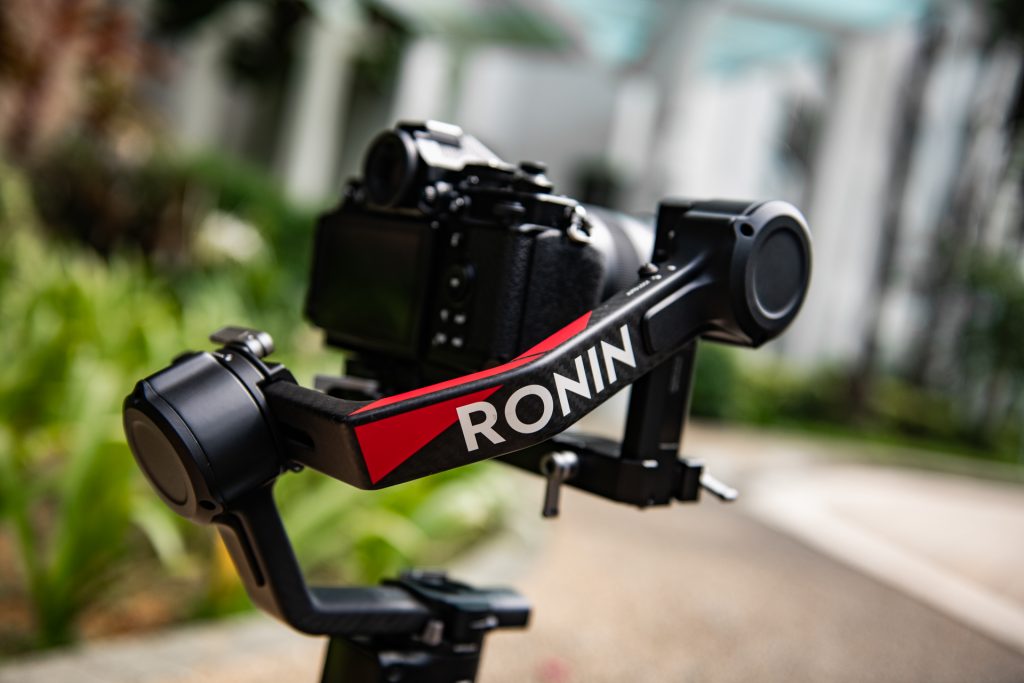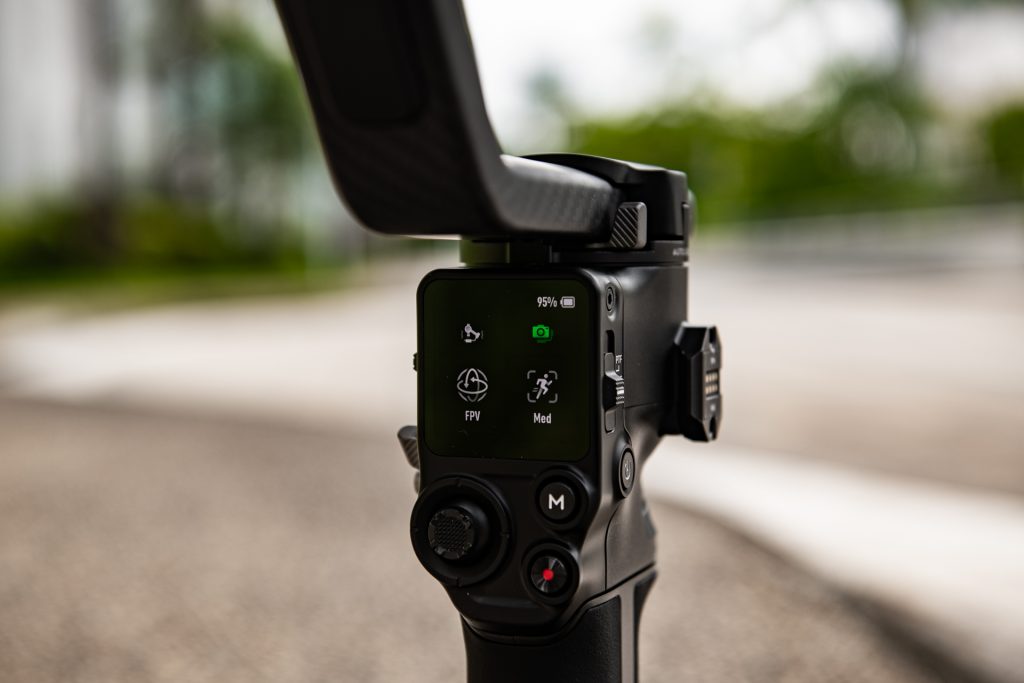DJI continues to make gimbals more intuitive to operate with the new RS4.
The DJI RS4 is the latest iteration in a lineup of successful handheld gimbals, further cementing DJI’s status as the top name in this market.
Gimbals can often be a hassle, taking ages to set up and occasionally throwing tantrums that make even seasoned videographers shy away.
DJI, ever attentive to their customers, has steadily refined its offerings, making the operator-gimbal interaction more seamless with each new generation. The RS4 is proof that they listen, and it follows the success of the Ronin RS3, but with a slew of enhancements that make life significantly easier.
so much easier to adjust!

One of the first things you’ll notice is the Teflon coating on the gimbal arms. Combined with the micro-adjustment knob introduced in the RS3, balancing your camera becomes almost effortless.
The Teflon surfaces allow for precise tweaks to the axis mounting points without the need for excessive force, reducing the risk of over-adjusting.

The large locking clasps on the arms transform the balancing process into a quick and easy task; adding accessories after balancing is no longer a dreaded chore.
The RS4 features a longer tilt-axis arm (8.5mm more to be exact) compared to its predecessor. This additional length means you can pile on the accessories without running out of arm space.

With a carrying capacity of up to 3kg (6.6lbs), the new arm ensures that this weight doesn’t need to be perfectly centered, giving you more flexibility in your setup.
vertical videos done right.

With the advent and popularity of vertical shooting nowadays, switching has never been simpler.
Unlike the RS3, where you had to dive into settings, the RS4 allows you to just flip the camera mounting plate. The plate has two connection points, one on the end and one underneath, with a quick-release button.
This means you can reattach the camera in a vertical position without rebalancing, maintaining full access to all follow modes and joystick movements. It’s a quick, intuitive process that feels like a significant upgrade.

Plus, the RS4 introduced a new 4th-generation stabilisation algorithm, which significantly improves stabilisation during bumpy rides or fast movements.
This is particularly notable for vertical shooting, where the algorithm optimises performance to keep your footage smooth and professional.
extras in the combo kit.

Opt for the RS4 combo kit, and you get the Focus Pro lens control motor. This handy addition can control zoom and focus rings via the joystick or front dial. It’s 30% faster than the previous model and allows for adjustments in speed, torque, and direction through the menu.
The gimbal’s control buttons and dials can manage various camera functions, like starting/stopping recording, taking photos, and adjusting exposure settings. Depending on your camera model, these controls can work wirelessly via Bluetooth or through a USB connection to the gimbal body.
damn, this is great.

The DJI RS4 may still have a learning curve, but once you’re familiar with its features, it becomes an invaluable tool. In my line of work, I mainly shoot automotive content, and I can now confidently put my trusty RS2 to rest, potentially replacing it with the RS4.
In the past, using a gimbal often felt like more work than it was worth. But with the RS4, the effort is well-rewarded; the gimbal does the heavy lifting, making your job much easier.
Check out more details on DJI’s website. And if you pick one up, you definitely won’t regret it. It’s a fantastic bit of kit.
Liked this? Check out more articles on Futr tech here.






